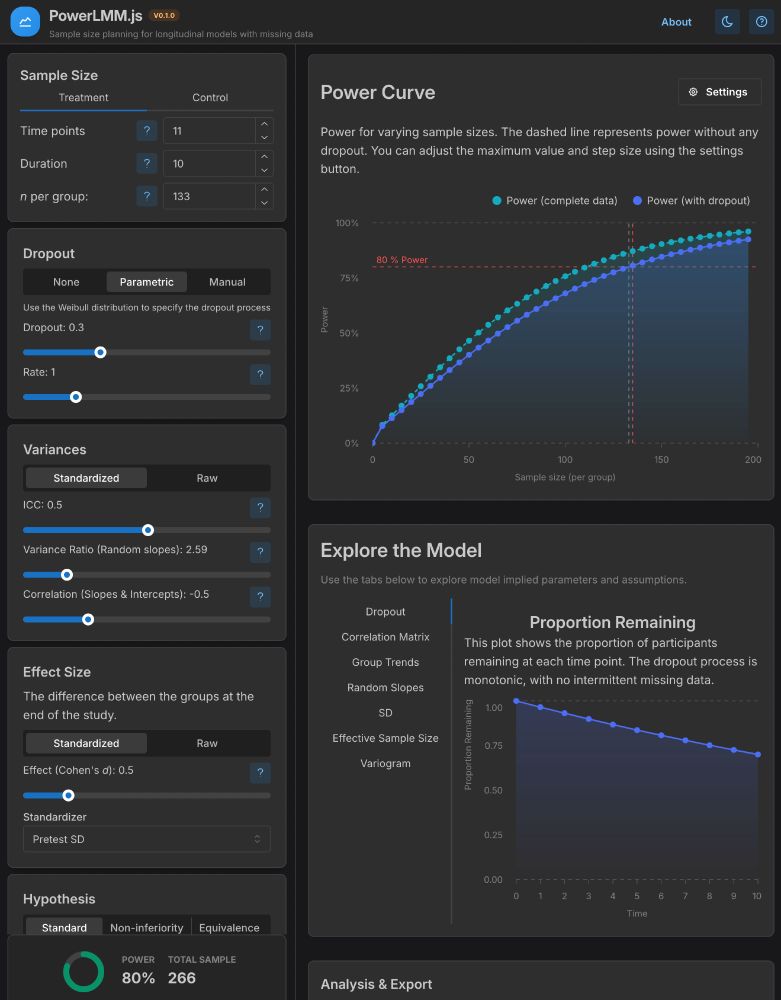
PhD & lic. psychologist. Research specialist at Karolinska Institutet. R package for Rasch psychometrics: pgmj.github.io/easyRasch/
#openscience, #prevention, #psychometrics, #rstats, #photo
Reposted by Michael E. Mann, Jan W. Mueller, David Lazer , and 14 more Michael E. Mann, Jan W. Mueller, David Lazer, Will Jennings, Brendan Nyhan, Steve Peers, Fabián Muniesa, Magnus Johansson, Tuomas Mattila, Devon Greyson, Robert C. Richards, Brian Keegan, Karen O’Leary, Pádua Fernandes, Olúfẹ́mi Táíwò, Prakash Kashwan, Brian Jm Quinn


Reposted by Magnus Johansson
Reposted by Magnus Johansson
a 🧵 1/n
Drain: arxiv.org/abs/2511.04820
Strain: direct.mit.edu/qss/article/...
Oligopoly: direct.mit.edu/qss/article/...




>"The domination of scientific publishing in the Global North by major commercial publishers is harmful to science; we need [...] to re-communalise publishing to serve science not the market."
Reposted by Magnus Johansson
solomonkurz.netlify.app/blog/2022-06...
solomonkurz.netlify.app/blog/2020-12...
solomonkurz.netlify.app/blog/2023-06...

journals.sagepub.com/doi/full/10....
Reposted by Magnus Johansson

www.theguardian.com/commentisfre...
That haul vastly exceeds how much the company expects regulators
To fine it for running scam ads.
www.reuters.com/investigatio...
journals.sagepub.com/doi/full/10....


Reposted by Richard McElreath, Magnus Johansson, Barrett , and 1 more Richard McElreath, Magnus Johansson, Barrett, Matti Vuorre
Apply through the ELLIS PhD program (dl October 31) ellis.eu/news/ellis-p...

Others, please share

powerlmmjs.rpsychologist.com
- Calculate power (etc) for multilevel models
- Examine effects of dropout and other important parameters
- Fast! (Instant results)

Now includes:
- Power analysis summary report
- Reproducible & shareable configs (URL/JSON)
- Calculations validated against R
- Hypothesis region visualization
powerlmmjs.rpsychologist.com


pgmj.github.io/reliability....
#rstats #psychometrics
Reposted by Magnus Johansson

Reposted by Diane Coyle, Anna O. Law, Magnus Johansson , and 3 more Diane Coyle, Anna O. Law, Magnus Johansson, Smith, John Hogan, Mark Rice


Preprints are read, shared, and cited, yet still dismissed as incomplete until blessed by a publisher. I argue that the true measure of scholarship lies in open exchange, not in the industry’s gatekeeping of what counts as published.


